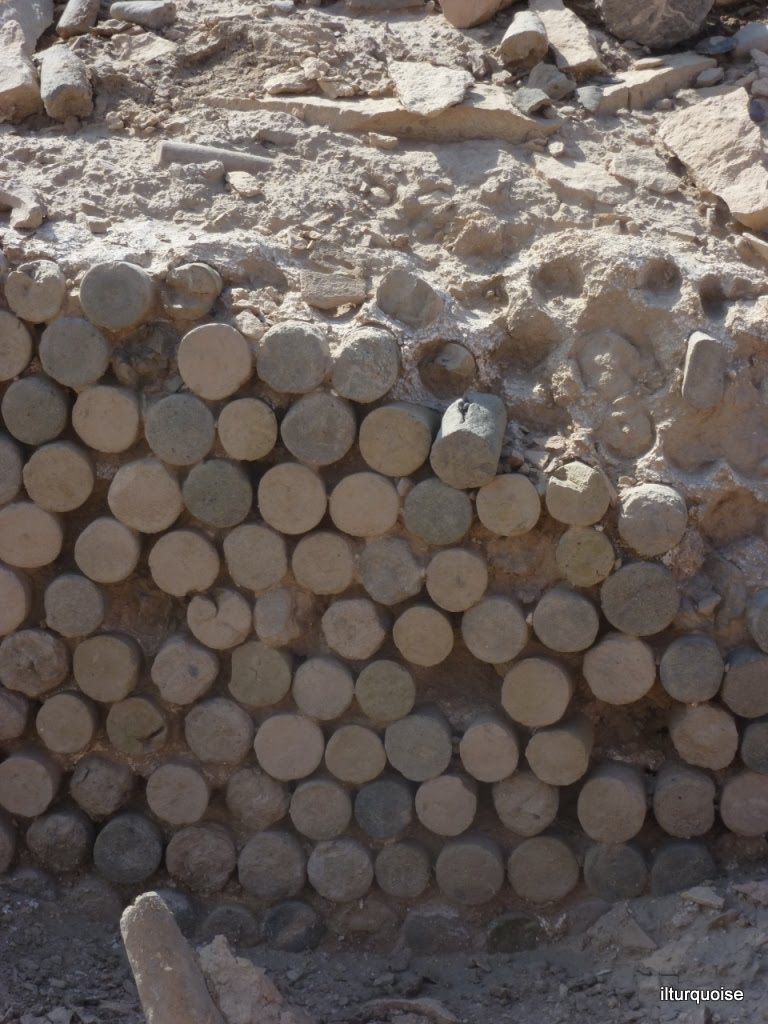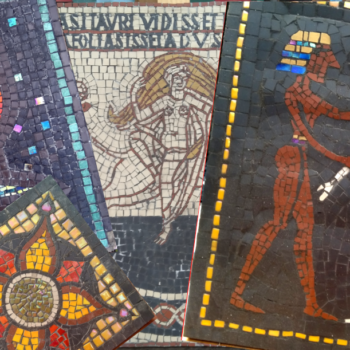Cone mosaics are the oldest known mosaics in the world
Baked clay cones for tesserae, plaster as thinset.
Cones of different shapes


Geometric patterns
Although Sumerian art produced amazing realistic pieces, I do not know of any example of figurative designs realized in cone mosaics. Actually, regular geometric shapes are very easy to build from circles by methodical repetitions.

After all, the Sumerians invented mathematics…


It has been suggested that such designs were possibly based on patterns found in wickerwork and textiles.
Protection against the weather
Very little stone was available to the Sumerians. But clay and dirt were available in vast amounts between the 2 rivers. Most of their buildings were built of raw mud bricks. Winters can be wet and windy in lower Mesopotamia. The cones made of hard baked clay were an excellent protection against erosion from wind, sand and water.













